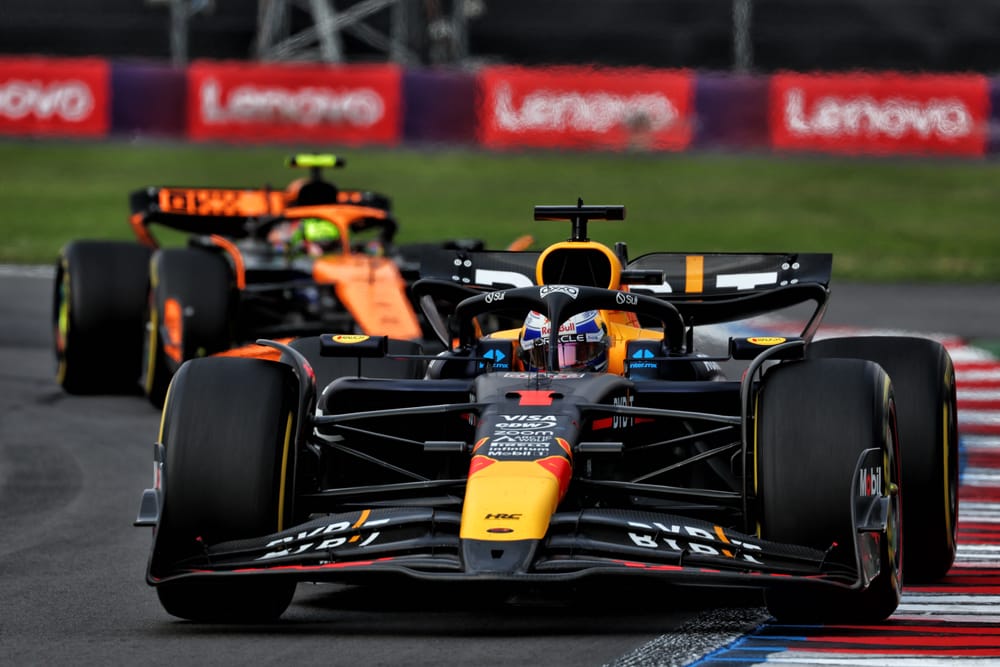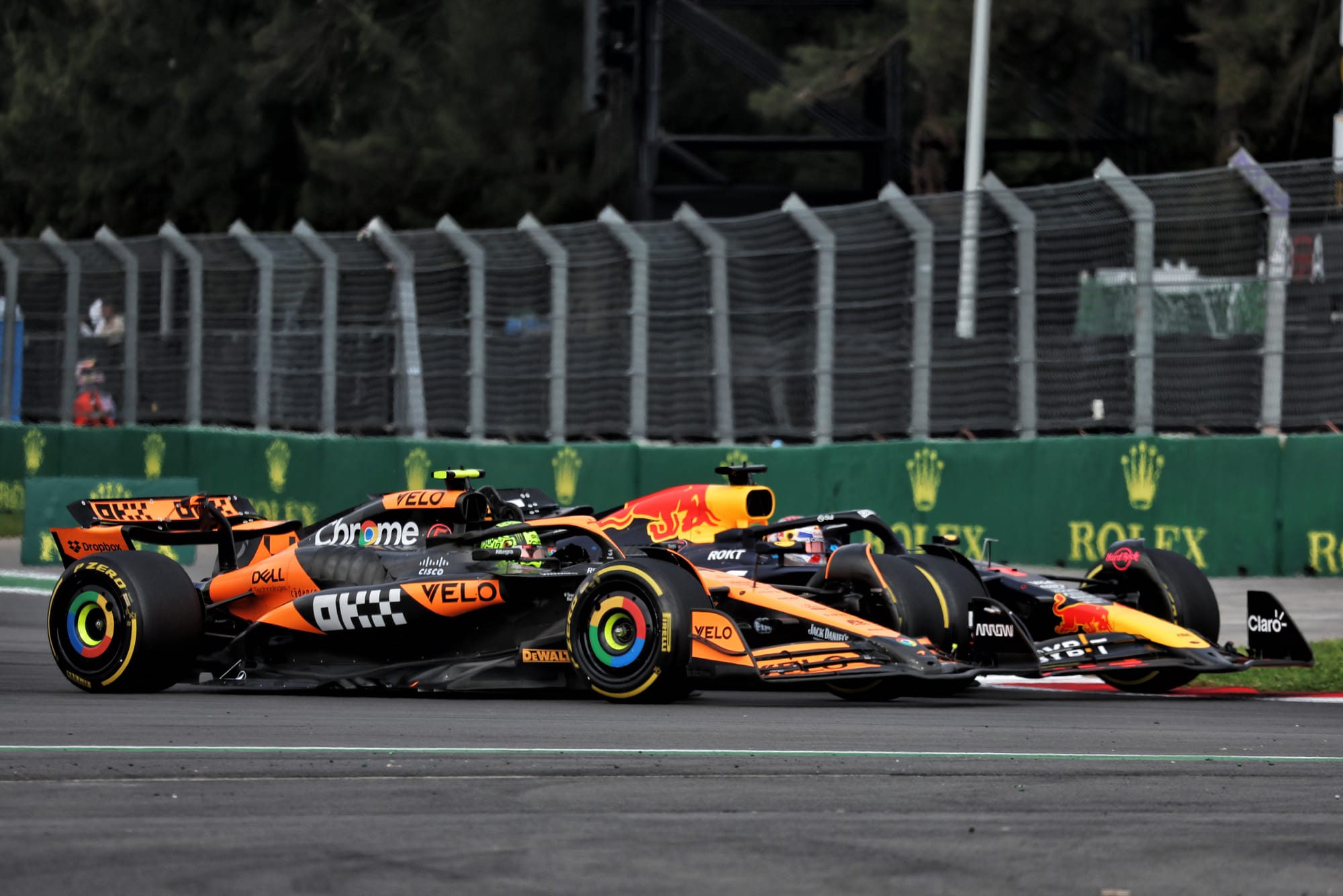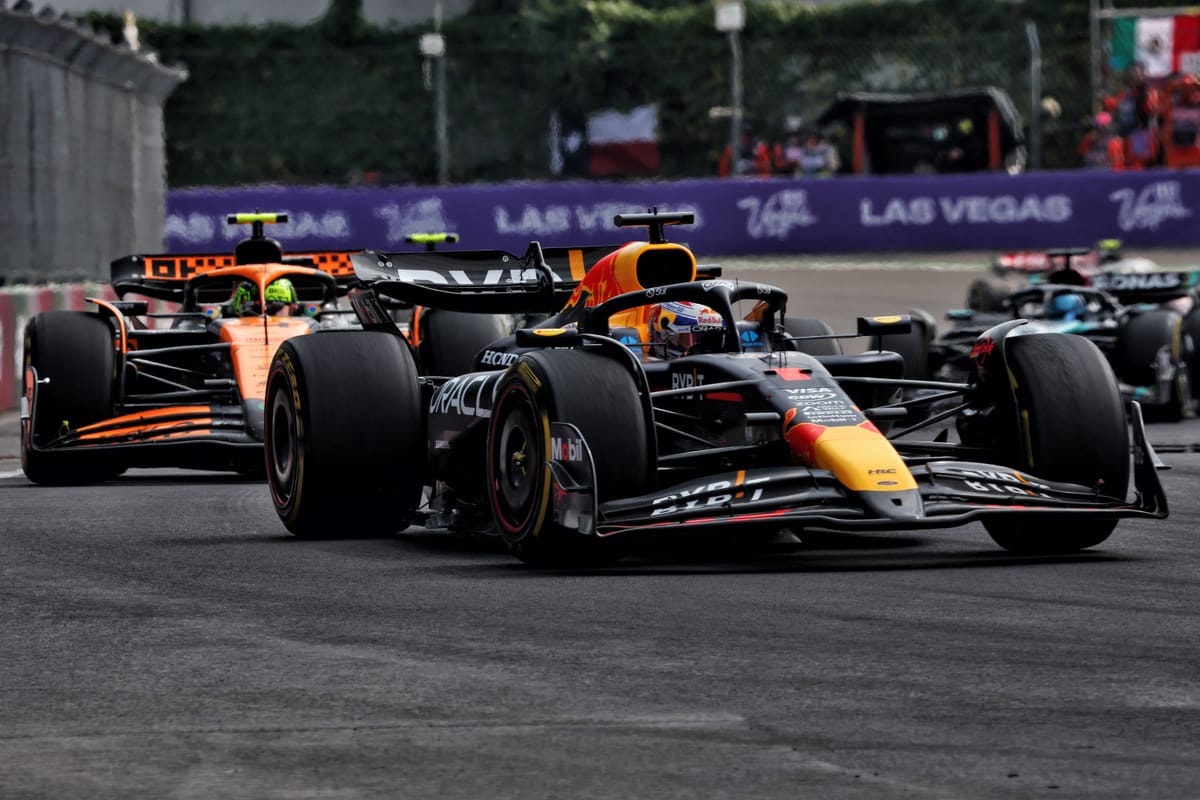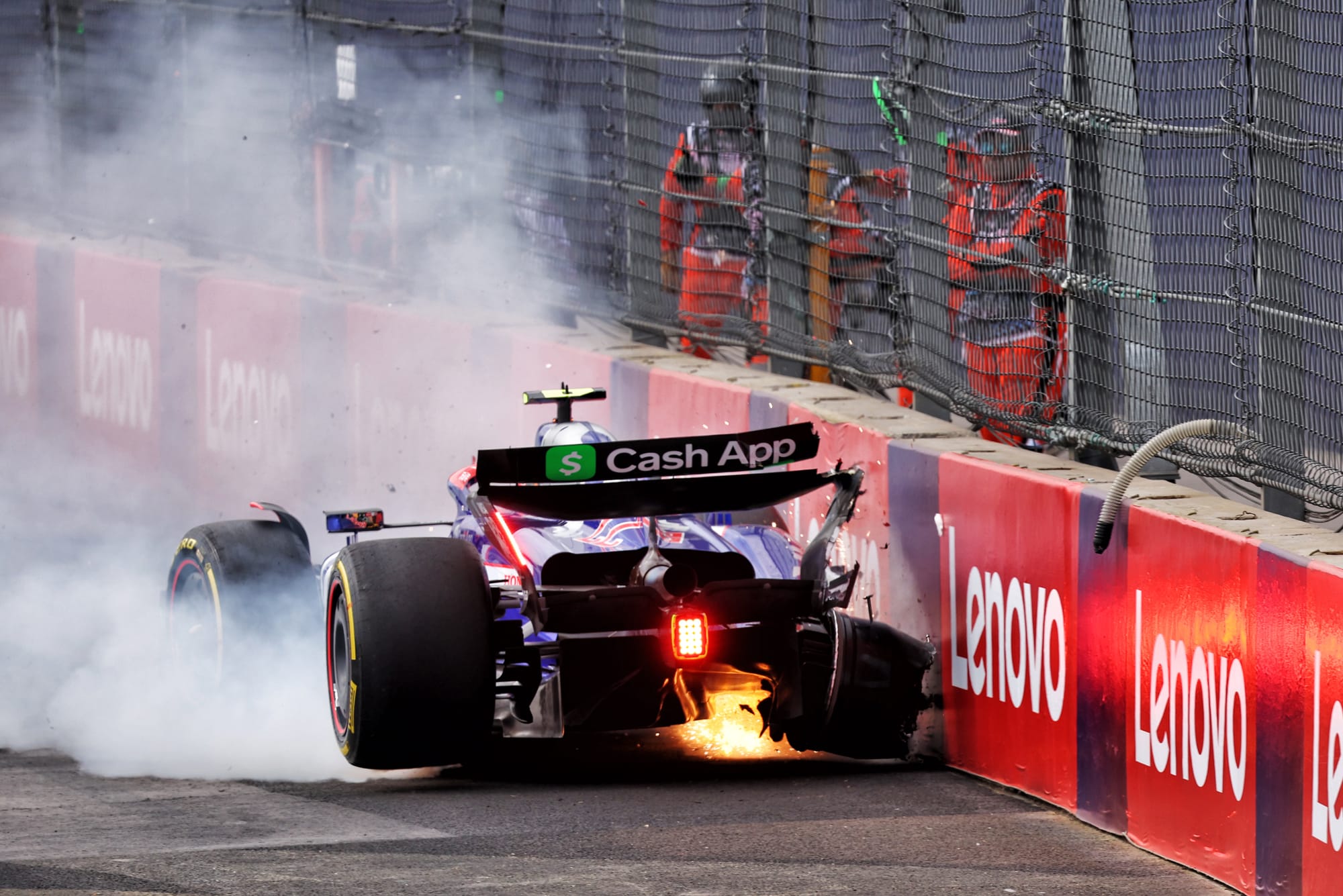Up Next

Red Bull Formula 1 boss Christian Horner took the unusual step of revealing telemetry of Lando Norris's McLaren to defend one of Max Verstappen's Mexican Grand Prix penalties - and warn F1 risks a "mess" with its racing rules.
Horner arrived at his usual post-race media session armed with telemetry showing data from Turn 4 of Norris's fastest lap of the grand prix compared to the same corner on the lap he clashed with Verstappen.
Norris tried to pass Verstappen around the outside in a near-repeat of the move he was penalised for in last week's United States Grand Prix, but this time he was further alongside on entry and for the duration of the corner.
Verstappen forced Norris off the track which led to the McLaren cutting across the grass and taking the place, but this time Verstappen was the one penalised as Norris had done enough compared to the Austin battle for Verstappen to be required to leave him room.
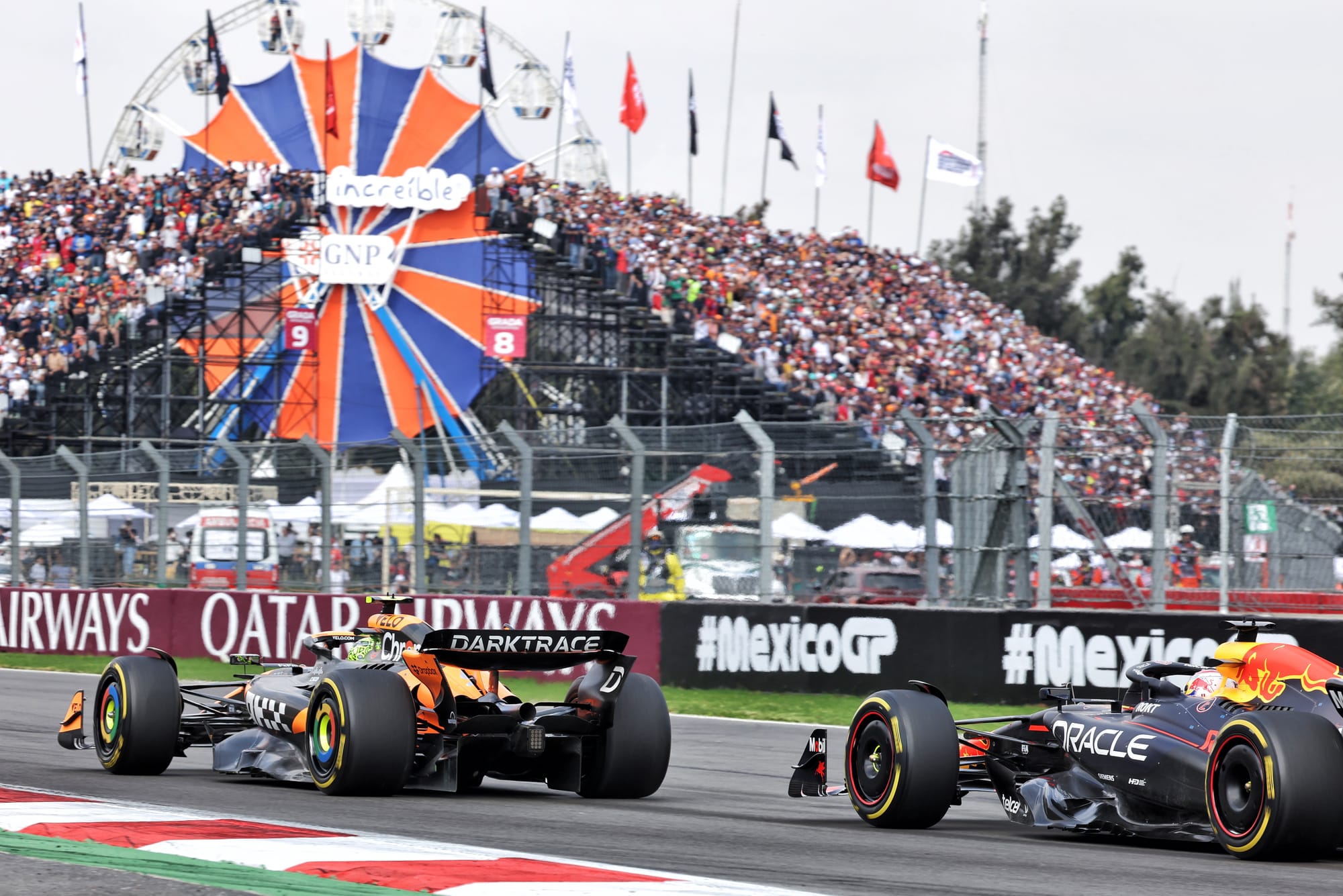
Horner disputed this because he argued, using the telemetry, that Norris had only got into that position by carrying in so much speed he was not going to make the corner anyway.
"It was very harsh to give two 10-second penalties," said Horner. "I think there's something more fundamental.
"There's been a reaction to last weekend, and I think it's very important for the stewards and the drivers to sit down, because if I show you here on the GPS [showing the run down to Turn 4], what you can see is that the orange line is Lando's fastest lap of the grand prix, [from] the point he is braking for Turn 4 and then obviously executing the corner.
"What you can see is that on lap whatever it was that's been the incident with Max, he is 15km/h faster, and later on the brakes, than his fastest lap of the grand prix.
"He wouldn't have made the corner. He would have run off track. You can see from his onboard steering.
"And of course at this point of the race he's got probably 80kg more fuel than at the point that he's done his fastest lap."
F1's racing guidelines currently acknowledge that "overtaking on the outside will always be viewed as a more difficult manoeuvre to accomplish" and set out three requirements for a driver overtaking on the outside to meet to be entitled to be given room:
- Have the front axle at least alongside the front axle of the other car at the apex of the corner and to the exit
- Be driven in a safe and controlled manner throughout the manoeuvre (entry, apex and exit)
- Be able to make the corner within the track limits
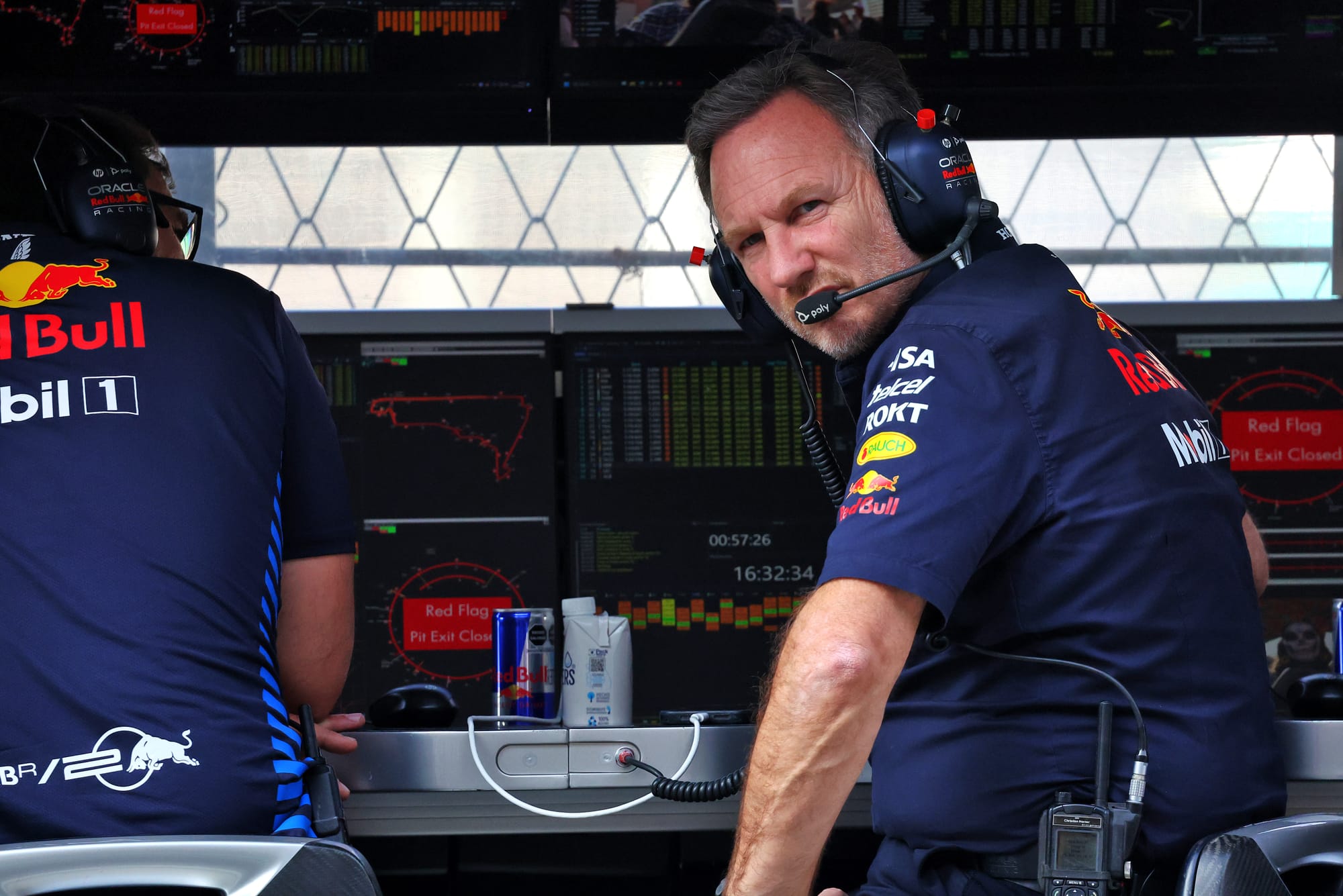
Horner's argument is that Norris did not satisfy these conditions, and that by siding with the car on the outside in this situation, "we're in danger of flipping the overtaking laws upside down, where drivers will just try to get their nose ahead at the apex and then claim that they have to be given room on the exit".
He said it needs to be "tidied up so that everybody knows what is acceptable, otherwise we're going to end up in a mess at the upcoming races".
"You can see quite clearly he's effectively come off the brakes, gone in super, super late to try and win that argument as far as the way these regulations are written, and then at that point you're penalised," Horner said.
Ironically, this was essentially the same justification for Verstappen avoiding a penalty a week ago. He braked late on the inside to be ahead at the apex - which allowed him to crowd Norris on the exit. Other drivers took issue with that approach but the guidelines, at least in their current form, allow it.
"It's slightly different," Horner contended. "Because obviously both of them went off the track last week, and you can't gain an advantage by passing off-track.
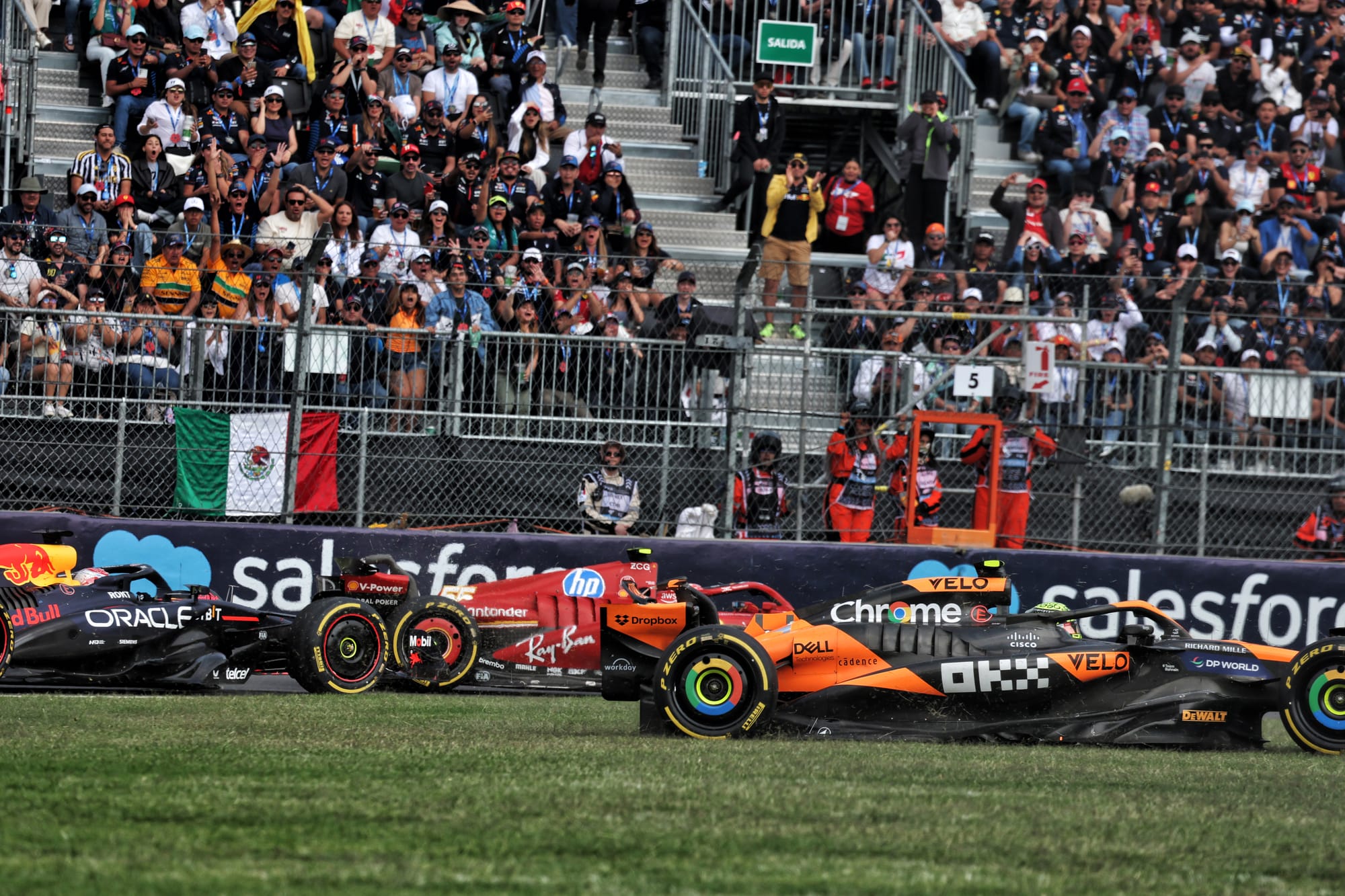
"This is different, because Max hasn't actually gone off the track. He's stayed within the perimeter.
"It's something that really does need to get tidied up moving forward.
"There's great racing going on, and it's just important that the rules of engagement are fair, rather than giving an advantage to the outside line.
"In the history of motorsport, being on the outside has always been the more risk place to be.
"Now, it’s almost the advantage because all you've got to do is have your nose ahead at the point they turn in, irrelevant if you're going to make the corner or not."
Horner did not offer as stern a defence of Verstappen for the second of his penalties, which was picked up for a reckless lunge on Norris a couple of corners after the first incident to reclaim the position while going off-track deep into run-off.
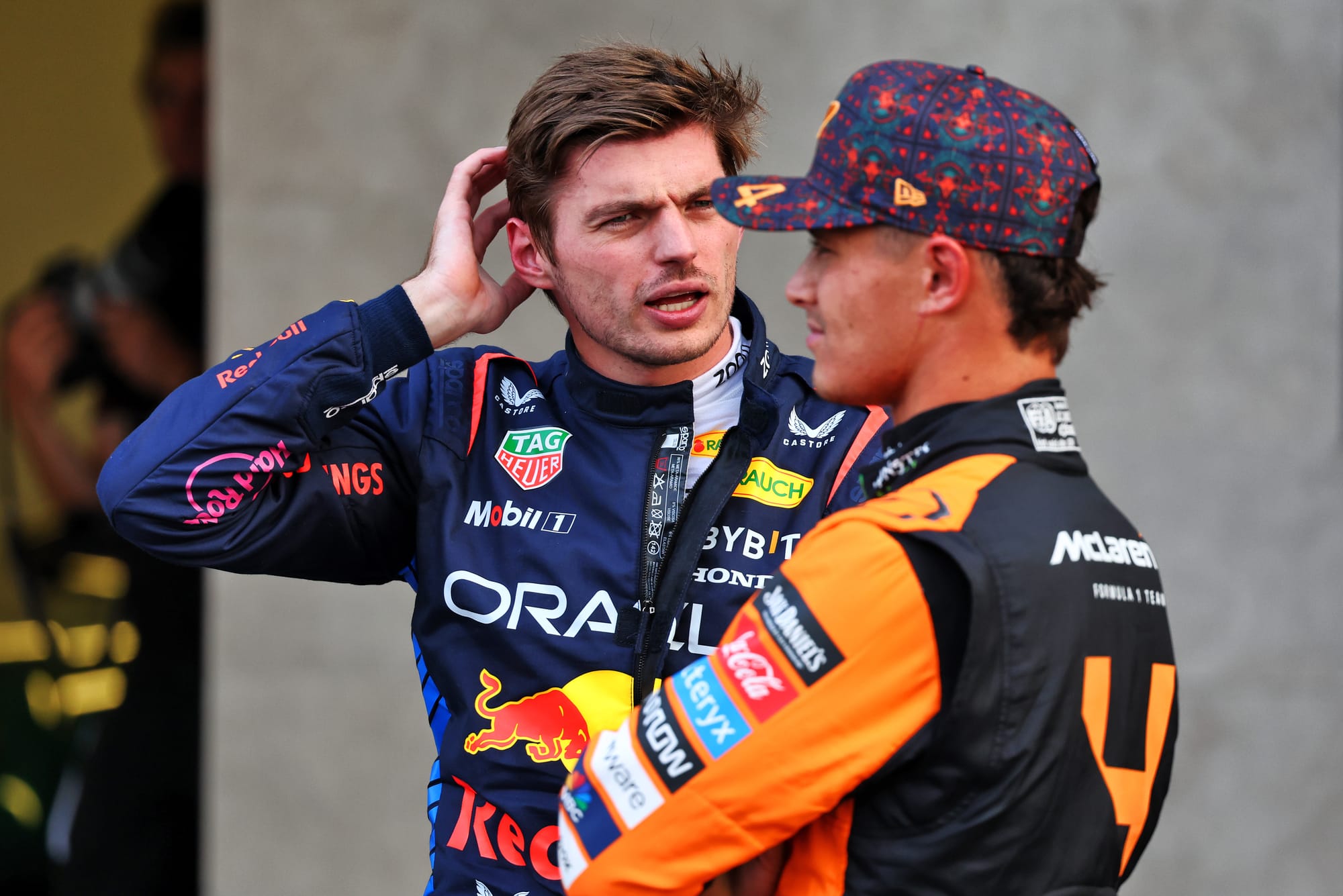
Verstappen's coy responses post-race indicated he was more aggrieved with the penalty for the first clash but knew he was bang to rights on the second.
Horner conceded that was "different" to the first, and begrudgingly accepted the penalty was fair, although he was still inevitably hesitant to blame Verstappen.
"I think Max was expecting Lando to give up the place," said Horner. "He's obviously gone up the inside there and they've both run wide.
"Arguably I can understand, effectively forcing the car wide there, why there would be a penalty applicable to that.
"But I think that was the frustration of potentially Lando not giving back the place from this incident here.
"These things, they only escalate."
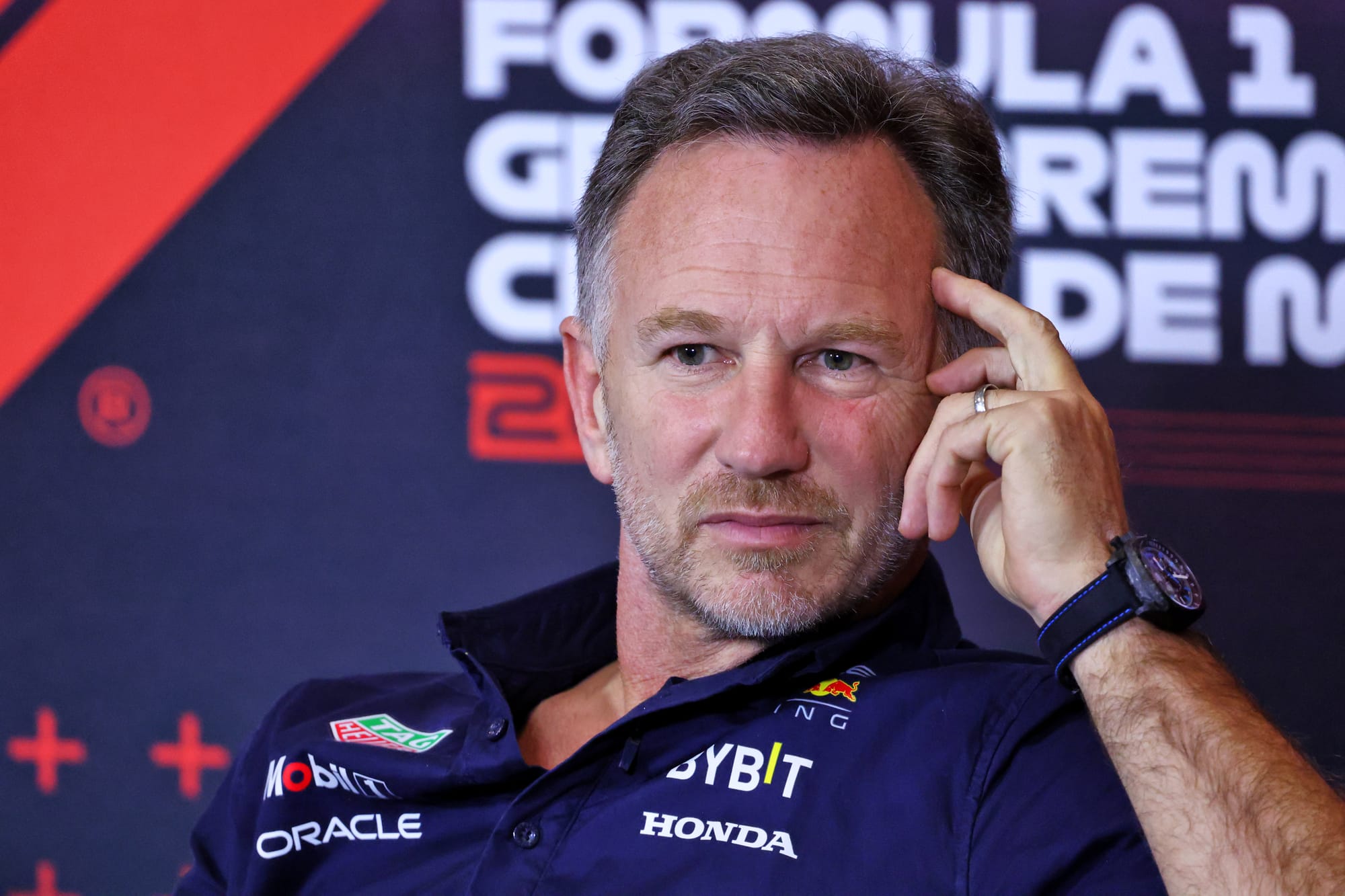
Despite the disagreement, Red Bull will not pursue a review of the decision to punish Verstappen like McLaren did over Norris's penalty in the US.
Horner instead reiterated a belief the guidelines need to favour the car on the inside, while at the same time arguing that the rules are becoming too complex.
"It's frustrating in that you don't want to have to consult a rule book on every single overtake, or defence," said Horner.
"All of these guys have grown up doing a lot of racing, and understand the principles of that.
"It's just important that we don’t over-regulate into a point where you encourage a behaviour that is not within the guidelines and principles of motor racing."


